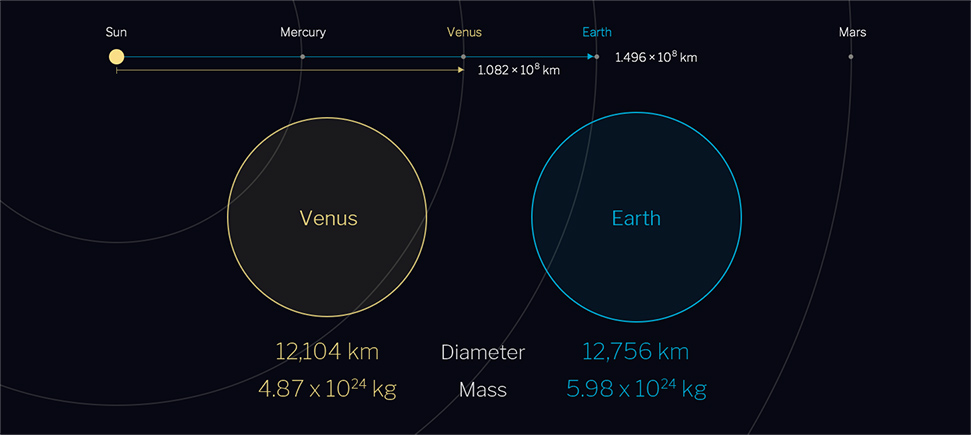MISSIONAbout Venus
Venus revolves just inside the orbit of the Earth and is the planet which comes closest to the Earth. The radius of the orbit is approximately 182 million km, or 0.72x the distance between the Earth and the Sun. Its diameter is 0.95x that of the Earth's, and its mass is 0.82x, so it closely resembles our own planet in that respect. Therefore, Venus is considered the "sibling" of the Earth.

Venus has been known since ancient times as a planet glowing particularly bright at dawn and dusk. This is because, in addition to being close to the Earth, it is covered in a cloudy atmosphere that reflects the Sunlight. Venus is covered in sulphuric acid clouds up to 20 km thick; we are unable to see the atmosphere or the surface below these clouds with our naked eyes. These clouds reflect 80 percent of light from the Sun, so the energy received by Venus is half of that of the Earth. However, given its dense atmosphere largely composed of carbon dioxide (90 atm of pressure on the surface), the greenhouse effect causes the temperature near the surface to be 460 °C (860 °F). This atmosphere moves at a high velocity (one cycle every four terrestrial days), overtaking the slow rotation (243 terrestrial days) of Venus, so it is called as "super rotation."
The oceans, magnetic fields, and plate tectonics found on the Earth do not exist on Venus. Furthermore, the presence of active volcanoes and lightning has not been confirmed yet. Though Venus is described as the "sibling" planet to the Earth, it has many differences.



